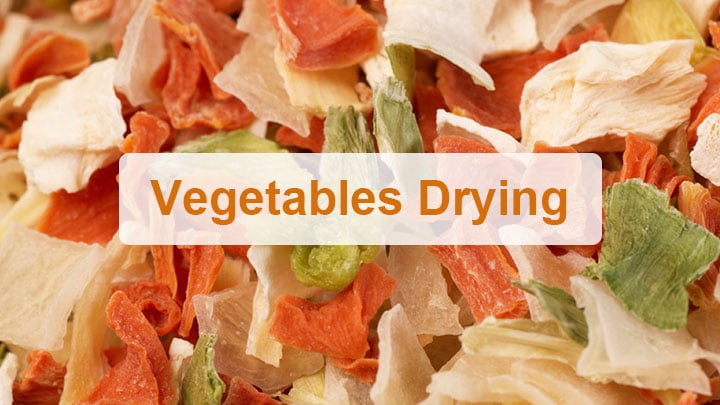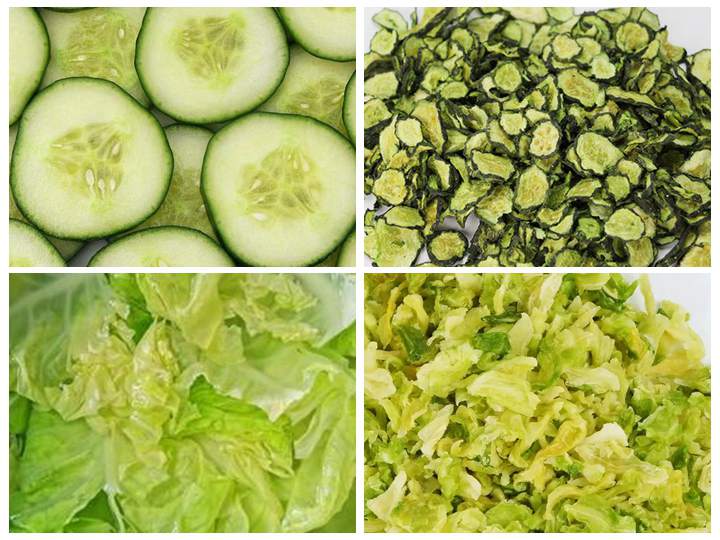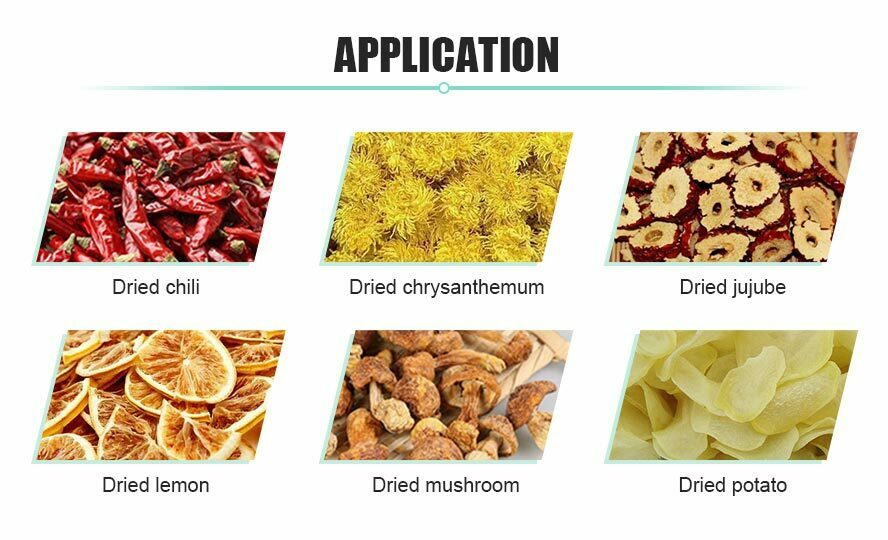
Dehydrated vegetables are made by drying fresh vegetables to remove most of the moisture content. The dehydrated vegetables can basically maintain the original color and nutrients. Compared with fresh vegetables, dehydrated vegetables have the advantages of small size, lightweight, and convenient transportation. Moreover, the dehydrated vegetables can be restored by immersing them in clean water when eating, and the original color, nutrition, and flavor of the vegetables can be retained. In the vegetable peak season, surplus vegetables can be processed into dehydrated vegetables, which are easy to store and transport.
What is the nutritional value of dried vegetables?

Vegetables are one of the essential foods in people’s daily diet. They can provide nutrients such as a variety of vitamins and minerals necessary for the human body. So do the dehydrated vegetables still have nutritional value? The answer is yes. In order to supplement nutrients in space, the vegetables that the astronauts eat are actually dehydrated vegetables. During the drying process of vegetables, only a small part of the water-soluble nutrients are lost. When most of the water in vegetables is evaporated, the nutrients will be relatively greatly concentrated. When we eat dehydrated vegetables, the nutrients we absorb may be more than fresh vegetables. And some vegetables like seaweed will be even more delicious after being dried. With the continuous development of technology, dehydrated vegetables have been able to retain most of the original nutrients of vegetables.
Why choose our vegetable drying equipment?
野菜と果物は水分を多く含んでおり、乾燥過程では低温で乾燥して乾燥させる必要があります。高温では栄養価が失われ、乾燥後の果物・野菜の色や形にも影響します。市場に出回る乾燥野菜は主にAD野菜とFD野菜に分けられます。AD野菜は熱風、マイクロ波、膨化などにより乾燥させ、水分は主に蒸発として排出されます。FD野菜は真空凍結乾燥により乾燥させ、水分は直接昇華として排出されます。FD野菜は風味が良く栄養価が高いですが、収量は低く、機械は非常に高価です。現在、市場に出回る多くの乾燥野菜は熱風乾燥で処理されています。

従来の乾燥野菜の作り方は主に空気乾燥、日干し乾燥などを使用しています。これらの方法には、熱効率の低さ、自動化の低さ、環境影響を受けやすいといった多くの欠点があります。私たちの空気エネルギー熱ポンプ野菜乾燥機は、周囲環境から大量の熱を吸収して被乾燥物へ転送するため、少量の電力で運用できます。エネルギー消費が少なく、エネルギー変換率が高いです。
The process of vegetable drying
- 原料の選定: 肉質の良い野菜の品種を選びます。脱水前に、最良のものを厳選し、劣ったものや害虫、腐敗、しおれた部分を取り除きます。野菜は80%成熟している必要があり、過熟または未熟なものも選別します。野菜をきれいな水で洗った後、涼しい場所で乾かしますが、直射日光に当ててはいけません。
- 切断とブランチング: 洗浄した原料を、製品の要求に応じてスライス、糸状、ストリップなどの形に切ります。ブランチング時の温度は原料によって異なります。水温は一般的に150℃以上で、ブランチング時間は2〜4分です。葉物野菜はブランチングしないのが最適です。
- 冷却と排水: 茹でた野菜はすぐに冷却する必要があります(通常は冷水ですすぎます)して、素早く室温に下げます。冷却後、水を振動式水分離器で排水し、乾燥時間を短縮します。その後、野菜を広げて冷やし、乾燥の準備をします。

- 乾燥: 乾燥中の温度、時間、色、湿度は、野菜の種類に応じて決定します。空気エネルギー熱ポンプ乾燥機の使用が望ましいです。空気エネルギーの加熱は徐々に増加し、野菜の元の組織繊維と栄養素を最大限に保持できます。野菜を材料トレイに入れ、材料トレイを材料トラックに挿入し、乾燥室に押し込み、密閉扉を閉めて乾燥工程を開始します。空気エネルギー熱ポンプ乾燥の過程では、野菜が空気に触れると、多くの熱が空気エネルギーから吸収されます。一部は野菜の内部温度を上げるために使われ、もう一部は野菜内の水分の移動と蒸発に使われます。空気が連続的に熱を野菜に伝え、水分を蒸発させる過程です。この過程は、加熱段階、一定速度乾燥段階、減速乾燥段階の3段階に分かれます。
- 保存段階: 乾燥が完了したら、すぐに包装しないでください。野菜が完全に冷めて室温と一致するまで待つのが最良です。包装した乾燥野菜は乾燥した涼しい場所に置いてください。
Applications of the vegetables drying machine
Our vegetable drying machine is also suitable for fruits, fungi, Chinese medicinal materials, seafood, crops, and some chemical products. It also can be customized according to the user’s demands for different products.

